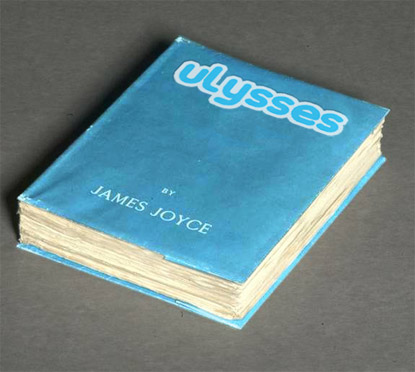
In 2007, Ian McCarthy and I launched Twittering Rocks, a live performance of the central “Wandering Rocks” chapter of James Joyce’s Ulysses, which we executed every Bloomsday (that’s today, June 16) from 2007 through 2011.
Last year, due to a change in the Twitter API (the move to OAuth, which requires that all users authorize applications rather than applications passing credentials to Twitter), Twittering Rocks didn’t really operate correctly, and in the intervening 365 days, Ian and I didn’t have a chance to reengineer the system to work again. It’s still possible, and surely we will do so in the future. As long as we have to open the patient, I’d rather incorporate some of the changes we’d planned since the original, including additional content and more accurate timing. But that’s a project that will have to wait for another year. Luckily, Bloomsday takes place every year! As Joyce puts it, a man of genius makes no mistakes. His errors are volitional and are the portals of discovery. Of genius we may not be, but discovers yes. So this year, instead of performing the piece Ian and I offer the following reflection upon it.
 At the end of Invisible Cities, Italo Calvino presents la città perfetta, the perfect city “fatta di frammenti mescolati col resto”—made of fragments mixed amid the rest. The annual recurrence of Twittering Rocks has made it a sort of Brigadoon in the Twitterverse, its text characters re-emerging every year into the same space where we, too, participate through 140 characters of text. One of our favorite examples appears at right, from the original run of Twittering Rocks, back when the Twitter homepage displayed the full public timeline.
At the end of Invisible Cities, Italo Calvino presents la città perfetta, the perfect city “fatta di frammenti mescolati col resto”—made of fragments mixed amid the rest. The annual recurrence of Twittering Rocks has made it a sort of Brigadoon in the Twitterverse, its text characters re-emerging every year into the same space where we, too, participate through 140 characters of text. One of our favorite examples appears at right, from the original run of Twittering Rocks, back when the Twitter homepage displayed the full public timeline.
The Wandering Rocks chapter is Joyce at his most Irish: burying the personal and emotionally heart-rending moments amidst a labyrinth of other chatter about a whole city’s worth of doings. Rearranging of the fragments of the chapter into a pure temporal sequence (which does not appear in the book directly, because the book cannot show several moments at the same time) makes it read much like Twitter itself, with its one single stram across which all our individual fragments are scattered. This sometimes makes any single narrative thread come off more fragmented. It also intensifies others because of the correlations across them in single moments, like the scene with the Dedalus sisters in their kitchen while the BARANG! of the pawn bell across town tolls the family’s financial doom.
That difference between the pure-chron representation of events in Twittering Rocks vs. the way Joyce orders the narrative threads in Wandering Rocks highlights how much his putting putting the viceregal cavalcade at the end makes the demonstration of colonial power a mere footnote to the real life of the city, as if some relegated to a filigree around a single letter of the Book of Kells.
In 1986, Hugh Kenner wrote about Joyce and his mechanical muse. As a literary scholar, Kenner was fascinated by the connection modernist writers felt with the technologies of their time. For T.S. Eliot, the alarm clock and the London Underground. For Joyce, light bulbs and linotype. Yet today, literature and literary practice either blindly celebrates or ignorantly laments its technical contexts. Really, are eBooks the long and short of reading and writing in a digital age? Just another Jonathan Franzen novel delivered via e-ink? We hope not.
Twittering Rocks is not the only experimental, computational Joyce adaptation, nor is it the only example of literary practice on Twitter. But it’s still rather alone in the bustling digital city, a bit like Leopold Bloom perhaps, the epic hero brought down to earth, a bit ridiculous and even revolting but also earnest and true, always looking, eating with relish the inner organs of beasts and fowls on the one hand, but perfumes of embraces all him assailing on the other.
Comments
alanc230
This has inspired me to, at long last, read Ulysses in its entirety. I have my project for the rest of the year.